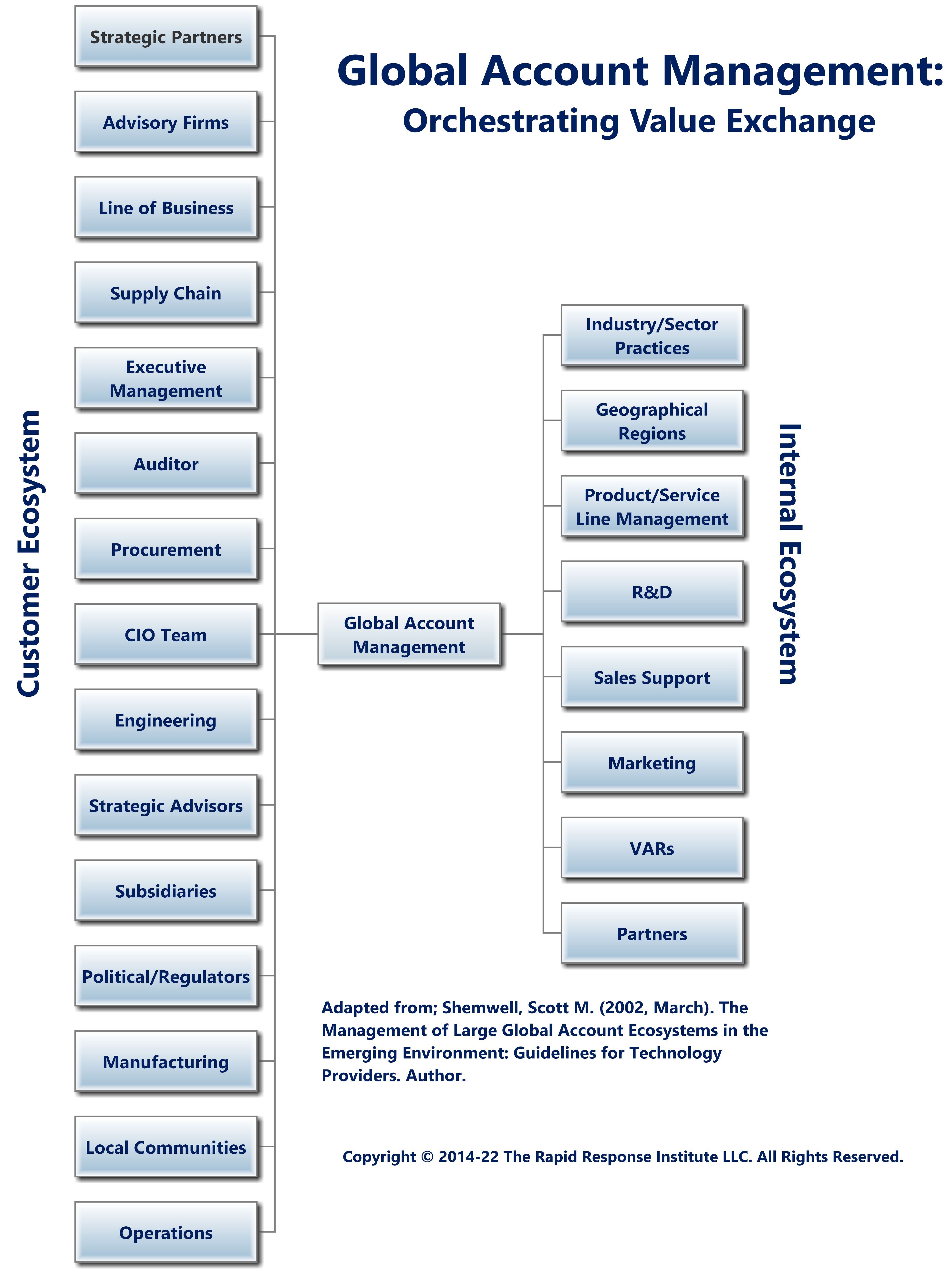This edition is taken from our forthcoming book tentatively titled, Techniques for Successfully Closing Deals in the 21st Century.
New Year’s Resolutions
We all make them and in many cases they are short lived, often falling by the wayside before March 31. So as we ponder what the new year will bring, most in the revenue generation flow process resolve to increase their deal pipeline and close quickly and often.
One of the problems we have with resolutions was well stated by no other than Albert Einstein who defined insanity as “doing the same thing over and over again and expecting different results.” While there is some argument as to whether this citation should be accredited to him, the point is well made. Old habits are hard to break.
Organizational culture plays a role in the sales cycle as well. Are sales representatives seen as ‘cowboys’ or are they a vital leader/member of a team? These revenue generation models will likely be diametrically opposed and for any given business sector give different results.
Complex Selling
The selling process has been well documented and there are a host of tools and expertise available and have been for decades. Pioneers like Zig Ziglar have been followed by a plethora of pundits and professionals offering all manner of sales advice, tools and now enhanced by digital marketing models.
For this cottage industry, some approaches work and some do not, i.e., CRM driven cold calling, ‘Let’s Jump on a Call I Know I Can Help.’ The other endearing message from today’s digital marketers include, “how would you like to increase your profit by XXX this year?’ And the ever popular snide, scoffing remarks when recurring computer driven emails/texts are not answered. Guess they are OK shutting themselves out of future business opportunities. These are newer versions of the long distance telephone services telemarketing boiler rooms of the past.
Managing Complexity
Can complexity be simplified? Not in the way many believe. B2B selling cannot be meaningfully reduced to three (3) bullets on a slide anymore than the Space Shuttle launches or Deepwater drilling can. When overly simplified, disaster is one possible outcome.
Behavioral economics as defined in our Structural Dynamics model states that, “decision-making model recognizes that societal, cultural and emotions among other biases contribute to how decisions are made.” ESG?
Despite claims to the contrary, humans are not very good at multitasking. We cannot juggle as many complex balls as we think we can. This is the reason airline pilots continue to use checklists even though some have 20 or more years of experience.
The Structural Dynamics methodology was developed to enable individuals and organizations to better manager the large number or measurable and latent variables in complex environments. While the model is based on mathematics, daily use does not require a technical background. Sales reps can use its premise to navigate the complex sales process.
Role of Inclusion
Sales Teams (in person/virtual/hybrid) are often already in place with sales representatives a member. Paraphrasing Donald Rumsfeld, “You go to war with the sales force you have, not the one you might want or wish to have at a later time.” Therefore, it is critical that every member of the team be fully engaged and heard. Some of the best ideas come from those who may feel they are outsiders.
Moreover, a diverse set of perspectives better enables creative or thinking outside the box solutions. Finally, it is an advantage for the sales team to mirror the procurement team so as to better understand ‘buying influences.’ This model is further developed in our eBook, Closing the Complex Deal: Your Economic Value Proposition in 10 Minutes or Less.
The Conductor
One can think of the Account Manager as the conductor of an orchestra albeit with two sections. While he or she may be a musician, the conductor does not contribute musically. The conductor leads the ensemble in the delivery of a performance. Hopefully, to a standing ovation.
It is important to understand that NO ONE in this sales process is a direct report to the account manager. She must convince all parties (including outside third parties) that her vision is the right one. She must also adapt accordingly when new information becomes available.
To finalize a deal, both the seller and buyer organizations must be aligned and in agreement. While it is beyond the scope of this piece to go into the details shown in the graphic below, suffice that each organization(s) or the ecosystem participant/member must have his or her value requirements satisfied.
Keep in mind that all parties are culturally distinct. Cross cultural or diverse engagement is a hallmark of this value exchange and should not be overlooked or minimized.
The number of economic actors in a major procurement can be large. It is important that they all be identified and managed accordingly. After all, it only takes one to torpedo a deal and that can happen at the very last moment.
Homework, Homework, Homework
Early in this sales rep’s career, I was tasked with making at least two, in-person sales calls a day. So in addition to visiting customers, I had to make telephone calls to get appointments for the 40 sales calls a month required. Needless to say in my naïveté of the selling process along with the demand for meeting this KPI, along with other duties such as client entertainment my level of preparedness was less than optimal. Therefore, not surprisingly my ability to make ‘quota’ was at risk.
My sales fortune changed forever when my sales manager authorized, what was at the time a unique approach. We would focus on fewer, better qualified prospects and spend the energy to better understand their needs. We would then develop an action plan to address the individuals‘ pain points. The result was my first multi-million dollar sale that was also ten percent of my division yearly revenue. The rest as they say is history.
Rather than doing the ‘back slapping good ole boy’ routine, we took the time to build the multiple relationships with the individuals on our customers’ procurement team. That meant not only doing a deep dive on their firm but also better understanding the immediate business needs as well as career aspirations.
So instead of the ‘Jump on a Call’ mentality, we became the Trusted Advisor who truly knew their business and could actually help the individual team members we were interacting with. Don’t forget what Louis Pasteur taught us. “Chance favors the prepared mind.”
Those Dreaded Gates
Ever wonder how a customer’s budget is developed? Does she just request funds and proceed to buy your products? It is a little more complicated than that. Most large organizations have a specific set of steps ALL capital funding (CAPEX) must go through. These are typically referred to as ‘Gates’ that vary slightly across organizations. However, the effect is the same.
Initially, firms undergo a planning process. This is an Internal process although certain subject matter experts and/or outside consultation may be sought. Once a Need has been identified further definition, including a project plan is developed.
At this point, certain Key Partners may be brought into the effort usually under a non-disclosure type of agreement. These are Trusted Advisors with important knowledge and insight into the problem at hand.
The third gate, Design Basis is the point at which the project scope and deliverables are developed and approved. At this point, the organization may seek input or bids from its Suppliers as well as other sources.
Once the technology assessment is complete and procurement finished, the design is finalized and the project implementation process begins. In this model, Implementation means the entire life cycle of the CAPEX, including the project build to decommissioning.

For more information on this process, see the hypothetical case study, How To Make The Case To The C-Suite Selling Large Scale Data Management Projects to the C-Suite. This piece provides some insight into the work individuals in an organization undertake before even asking for funding, much less receiving it. In the article, the project champion must also develop the economic value proposition before briefing the Chief Financial Officer (CFO).
The Value Prop
One of the most difficult challenges facing organizations is articulating the value proposition(s) their product/service lines brings to stakeholders. Many still offer the Feature–Benefit model whereby users enjoys traits of the product. For example, the German automobile company BMW’s tagline, “Sheer Driving Pleasure” sends a clear message regarding the benefit of driving one of its cars. However, one wonders if his approach works as well for flat screen televisions where most features are essentially the same for all suppliers.
Almost 20 years ago, this writer was working with a large public company that was making a large digital CAPEX decision. As part of this process, we looked at their organization through the lens of the Conductor described above. From this perspective, each economic actor must see a demonstrable value if she/he is to ‘sign off’ on the deal.
Many consumers of technology do not know a bit from a byte. Nor should they. Products/Services procured are used to solve real business problems. While cool stuff like Artificial Intelligence (AI) are all the rage, so what?
Paraphrasing Peter Drucker, Business Metrics Eats Cool Stuff for Lunch Every Time. If a realistic business driven value proportion is not put forth, the deal will not close. Moreover, prospects may decide that this vendor is not useful going forward either and not make the vendor short list.
It takes time and frankly considerable effort to construct a useful Economic Value Proposition. The Conductor must find all key players and address their needs financially. While many will want to gloss over this hard work, success will be elusive if this process is skipped.
To that end, we have developed our Economic Value Proposition Matrix (R) which is a useful tool for identifying a full value proposition from all economic actors in the ecosystem. Moreover, when the Conductor seeks input from all sources the buyer essentially has ‘sold themselves’ on the project. As previously noted, this makes the internal sales effort that much easier.
It is tempting to fall in love with technology. Who amongst us does like appreciate the convenience of smart devices? But is it the technology we love or the value we receive from using it? Any value proposition put forth must demonstrate to potential users that it makes their life better.
Win-Win
The concept of both sides feeling good about a deal is a great definition of success. Even better, if the provider is viewed as a Trusted Advisor the value of the relationship may approach exponential returns for both parties. This point cannot be overstated.
Getting From Here to There
Some may see these as aspirational goals and difficult if not impossible to achieve. There is a process towards moving to a more mature sales model. Each step in this maturity process involves training and possibly mentoring.
However, typical sales training may no longer be applicable. With the focus on selling as opposed to the development of a Relationship between the organizations, the attempt is to move merchandise. This old vendor model persists and clouds the real value that can be attained.
A more enlighten view recognizes that each party to a deal is an independent yet co-dependent economic actor. As such cultural differences must be accounted for. In essence, the Behaviors of each are somewhat dependent on the situation or Conditions at any given time.
Originally, taken from the author’s doctoral dissertation, the RBC model has been extended to include the selling process. The Conductor must assess the behaviors of all against the condition at the time. Only then can he or she understand the relationships among parties and what next steps might be.
One tool that is available is our Cross Cultural, Cloud based Deal Negotiation serious game. This solution puts players into a realistic situation or Condition and trains teams (defined earlier in the Conductor) to arrive at collaborative agreements. The Win-Win necessary for success.
Final Thoughts
Closing deals is a complicated process. The approach described herein is tested and proven. It is a challenge to address the myriad of chess pieces moving on the deal board. However, successful sales reps oversee and guide the players.
As the saying goes, selling today is ‘not your grandfather’s approach.’ Buyers are very demanding and the ‘drive by’ approach to selling will not generate success. The ‘Let’s Jump on a Call’ model is so 20th Century. Here is wishing you all success!
For More Information
Look for our forthcoming book on this subject. Due out later this year.
Please note, RRI does not endorse or advocate the links to any third-party materials. They are provided for education and entertainment only.
For more information on Cross Cultural Sales Game, check out our Cross Cultural Serious Game. You can contact this author as well.
Dr. Shemwell’s Sales Experience
- Acknowledged authority and author on Hi-Tech B2B at global scale
- Total direct sales of over $3 billion during career – extensive international experience
- Head of Software Business Unit w/P&L Responsibility
- As an International Sales Executive sold a single order in excess of $350 million (in today’s dollars) – hardware and software systems to global Japanese firm in Tokyo
- Responsible for revenue generation of over $500 million as sales manager for oilfield operations outsourcing
- Over $40 million in professional services in a single fiscal year
- Serial entrepreneur, exit (merge/sold) two start-up firms



